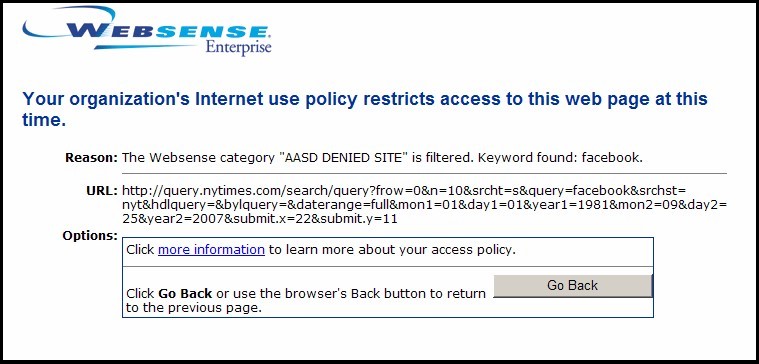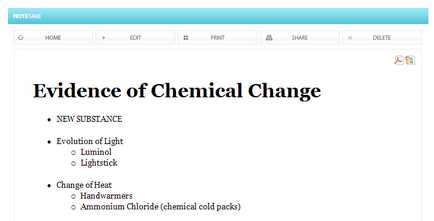This little story illustrates the absolutely ridiculous nature of Websense – my district’s internet filter.
While perusing through my feeds on Google Reader this morning, I found a link to a New York Times article about how the state of New York is investigating Facebook’s safety rules.
Needless to say, I was websensed. While trying to link to this article, I was blocked. Thinking this was just a fluke, I typed ‘facebook’ into the NY Times search field:
Again, I was blocked by Websense:
To recap, my district’s internet filter is not only blocking Facebook (with which I completely agree), but they are also blocking information about Facebook!
Where am I – the United States or China!






Recent Comments